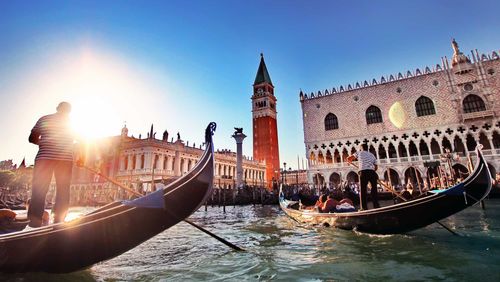Brief history of Santoríni
From as early as 3000 BC, Ancient Thíra developed as a sophisticated outpost of Minoan civilization, until sometime between 1650–1600 BC when catastrophe struck: the volcano-island erupted some 60 cubic kilometres of magma over a period of months. The island’s heart sank below the sea, leaving a caldera 10km in diameter. Earthquakes and tsunami reverberated across the Aegean – one full metre of ash was discovered on Rhodes – Thíra was destroyed, and the great Minoan civilization on Crete was dealt a severe blow by the ensuing ash fallout and tsunami. The island’s history has become linked with the legend of Atlantis, all because of Plato. Although he dated the cataclysm to approximately 9500 BC, he was perhaps inspired by folk memories.
Firá and around
Half-rebuilt after a devastating earthquake in 1956, FIRÁ (also known as Hóra) clings precariously to the edge of the enormous caldera. The rising and setting of the sun are especially beautiful when seen here against the Cycladic buildings lining the clifftop, and are even enough to make battling through the high-season crowds worthwhile. Although Firá’s restaurants are primarily aimed at the tourist market, the food can be very good; views of the crater add considerably to the price. Similarly accommodation isn’t cheap and rooms facing the caldera tend to be particularly expensive.
Using a spectacular two-hour footpath along the lip of the caldera you reach the village of Imerovígli and further to the north Firostefáni, both of which have equally stunning views and prices. The only alternative location, where you don’t have to pay as much for the view, is Karterádhos, a small village about twenty minutes’ walk southeast of Firá.
The archipelago
The best and most popular day-trip from Firá is to the three islands of the inner archipelago. Most people stick to the still volcanically active Paleá and Néa Kaméni, although, if you have time, it is worth staying overnight in Thirassía for a glimpse of what Santoríni used to feel like before the cruise ships arrived.
Paleá and Néa Kaméni
Local ferries from either Skála Firás or Ía (Ammoúdhi), venture to the charred volcanic islets of Paleá Kaméni (active 46–1458 AD) and Néa Kaméni (active 1707–1950). At Paleá Kaméni you can swim from the boat to warm mineral-laden springs, while Néa Kaméni (€2 entrance fee), with its own mud-clouded hot springs, features a demanding hike to a smouldering, volcanically active crater.
Thirassía
The boat excursions also continue to the relatively unspoilt islet of Thirassía (thirasia.gr), which was once part of Santoríni until sliced off by an eruption in the third century BC. It’s an excellent destination, except during the tour-boat rush of lunch hour. At other times, the island is one of the quietest in the Cyclades, with views as dramatic as any on Santoríni. The downside is that there is no proper beach and the tavernas in Kórfos close early after the last ferry has gone. There is an ATM at the Citizen’s Service office (KEP) and credit cards are normally not accepted on the island.
Tour boats head for the village of Kórfos, a stretch of shingle backed by fishermen’s houses and high cliffs while ferries dock at Ríva. There should be no problem taking a car or rental bike over, but fill up with petrol first. From Kórfos a steep, stepped path climbs up to Manolás, nearly 200m above, where donkeys are still used for transport. Manolás straggles along the edge of the caldera, an attractive small village that gives an idea of what Santoríni was like before tourism arrived there.
The wineries
Some of Santoríni’s most important wineries are scattered around Pýrgos and the south, and offer excellent-value tours. Whichever tour you go on, none is complete without a taste of Santoríni’s prized dessert wine, vinsánto (reminiscent of the Tuscan vin santo), which is among the finest wines produced in Greece and used by the Orthodox Church in Holy Communion. Tour prices at the smaller wineries usually include tastings, while samples are available from the larger wineries for a nominal fee.









































